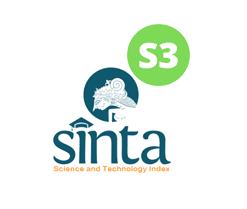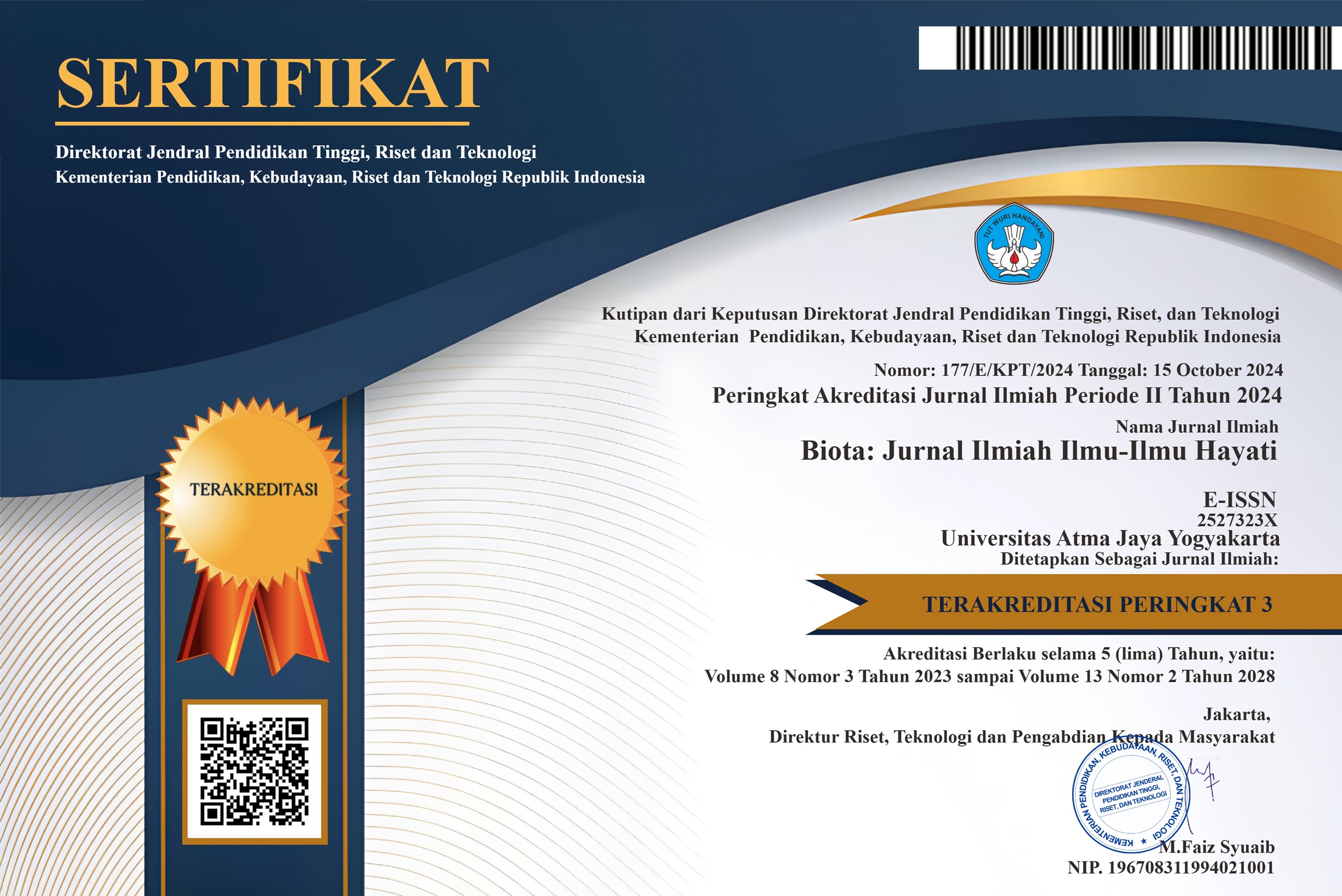Tinjauan Pemanfaatan Ranggah Rusa dan Karapas Kura-kura Air Tawar Di Propinsi Papua
DOI:
https://doi.org/10.24002/biota.v15i1.2660Keywords:
Papua, hunting, hard antlers, carapace, by-productAbstract
In Papua, rusa deer (Rusa timorensis) and freshwater turtles constitute the local people bush meat resources through hunting. These hunting activities are produced some by-products i.e. hard antlers from deer and carapace shells from freshwater turtles, where both have a high economic value. The purpose of this study was to investigate the level of production of those by-products and the pathway of the local market being established. The study was conducted at Merauke Regency, Papua, and its vicinity by visiting the key players of all collectors and trade levels. The results showed that on almost all harvested bush meat came from freshwater turtles were cooked on the location, leaving only the carapace shells. Only small quantity of the bush meat was taken home or for trading purposes. However for deer, the majority of hunting activities was done on the purpose for the meat to be sold in the market and small quantity was used for personal needs. Trading on the by-products was conducted at three levels, they were local collectors, middle collectors and local exporter. In general, over 62% of hard antlers samples being observed were uncast hard antlers and 88% of the hard antlers came from the third growth onwards. In a year, at least 1.600-3.700 pairs of hard antlers were acquired, or equivalent to 2.8-6.6 tons. The freshwater turtles being identified were Macrochelodina parkeri, Chelodina reimanni, Macrochelodina rugosa, Elseya braderhorsti and Emydura subglobosa, in which none of the species is under Appendix CITES's list or as Indonesian protected species.Downloads
Published
22-10-2019
How to Cite
Semiadi, G., & Sidik, I. (2019). Tinjauan Pemanfaatan Ranggah Rusa dan Karapas Kura-kura Air Tawar Di Propinsi Papua. Biota : Jurnal Ilmiah Ilmu-Ilmu Hayati, 15(1), 149–157. https://doi.org/10.24002/biota.v15i1.2660
Issue
Section
Articles
License
Authors who publish with Biota : Jurnal Ilmiah Ilmu-Ilmu Hayati agree to the following terms:
- Authors retain copyright and grant the Biota : Jurnal Ilmiah Ilmu-Ilmu Hayati right of first publication. Licensed under a Creative Commons Attribution-NonCommercial 4.0 International License that allows others to share the work with an acknowledgment of the work's authorship and initial publication in this journal.
- Authors are able to enter into separate, additional contractual arrangements for the non-exclusive distribution of the journal's published version of the work (e.g., post it to an institutional repository or publish it in a book), with an acknowledgment of its initial publication in Biota : Jurnal Ilmiah Ilmu-Ilmu Hayati, and as long as Author is not used for commercial purposes.












